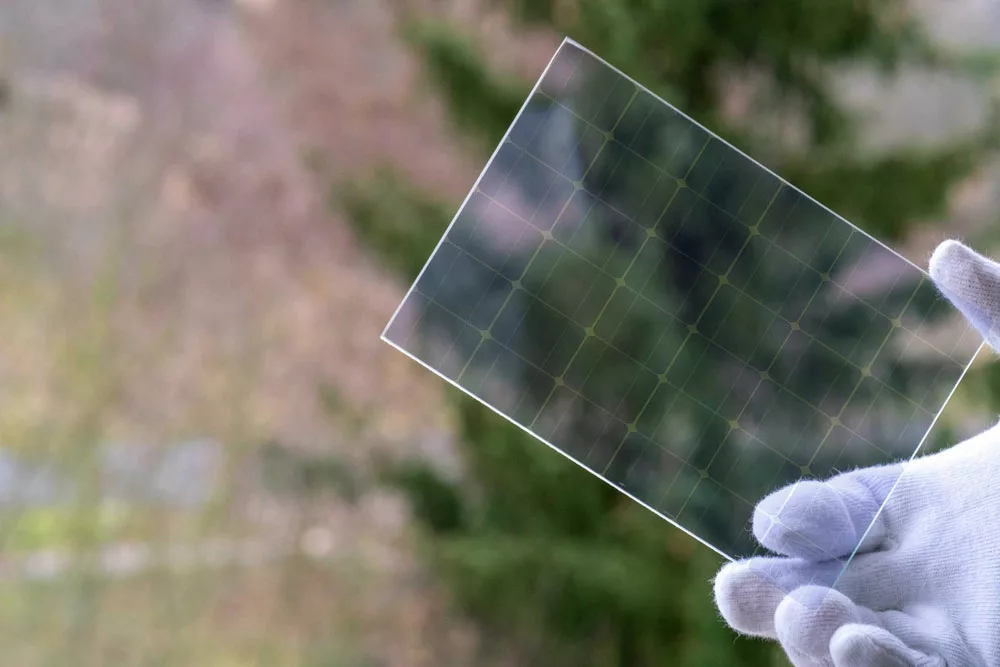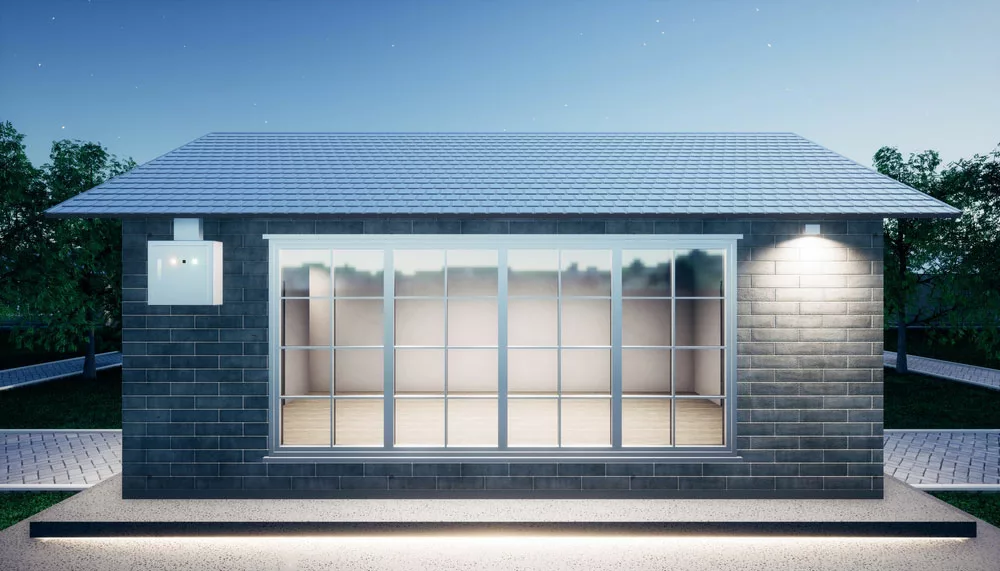First created by researchers at Michigan state university in 2014, transparent solar panels could be the future solution to our endless energy needs. Imagine if your windows were solar panels but still allowed light through. Or an entire skyscraper is made of glass solar panels.
It would mean a whole city could sustainably generate solar energy. Well, this is not just a dream; it is already happening.
Transparent Solar Panels Meaning
Transparent solar panels allow incoming light through just like clear glass windows. But they can trap invisible light (infrared and ultraviolet) and convert it to renewable energy.
As such, they have a vast application. Your windows, entire skyscrapers wall, and even your phone screen can be a solar panel. This technology can turn anything glass into a source of solar energy.
With so much glass in the world, this is a potential game changer in widening the scope of solar panels. Transparent solar technologies could offer more than 40% of energy demand in the US. If used together with regular rooftop solar units, this can rise to almost 100%.

A transparent solar pane
How Does a Transparent Solar Panel Work?
Conventional solar panels trap visible light and transform it into power. However, fully clear solar panels would let up to 86% of incoming light through. So how do they generate power? Here is the trick.
Fully clear solar panels capture all the invisible light and transform it into energy. To achieve this, researchers at Michigan university designed the panels to use TLSC (transparent luminescent solar concentrator). This material consists of organic salt that can effectively absorb invisible wavelengths of light but still make the solar panel transparent. The invisible lights of interest here are specifically infrared and ultraviolet.
The glass first transforms the invisible lights into a different form of infrared, then moves it to the edge of the pane, where solar cells convert it to energy. With only invisible light to transform into energy, a fully clear solar panel has only an estimated 1% efficiency. Partially clear solar panels may have a slightly higher efficiency but can only allow little light into your building.
How Much is a Transparent Solar Panel?
As a new technology, the transparent solar panel is still taking shape. However, the average cost of the available ones varies widely between $300 and $500 for a 240W to 300W solar window.
Several factors will determine the cost of implementing the technology as we go along. However, it has the potential of cost saving over conventional solar panels.
The production cost is said to be cheaper, and there are significant savings on installation. With a plan to turn windows into solar panels, expect the installation cost to go even 50% cheaper than conventional solar panels.
Pros and Cons of Transparent Solar Panels
There are two sides to every story. Let’s look at the advantages and drawbacks of this technology.
Pros
Affordable Option
They are cheaper to produce compared to traditional solar panels. Besides, the installation is easier and more affordable.
Glass is Widely Available
Glass is virtually everywhere, from skyscrapers to the screen of your phone. The US alone has 5-7 billion square meters of glass surface. Imagine the renewable energy this country can generate if they turn glasses into power-generating panels.

Skyscrapers can be sources of solar energy
Save on Space
Ordinary solar panels require a wide setup area making it difficult to implement in metropolitan locations. Unlike conventional panels, you can install glass solar panels on roofs and walls. That means you will not require a large setup area.
Reduce Air Conditioning Needs
By utilizing infrared light, the solar cells block much of the infrared radiation from penetrating your room. This would cut down on air conditioning needs.
Cons
Efficiency is a Significant Concern
There is a price to pay for the transparent nature of these solar panels. While conventional solar panels have more than 20% efficiency, partially clear solar panels only boast an efficiency of around 7-10%. The fully transparent ones have as low as 1% efficiency.
You will need a large set of solar panels to power your home. Or you can supplement a transparent solar window with regular rooftop solar to meet your renewable energy needs.

Transparent solar windows and rooftop panels
None is Fully Transparent
As mentioned before, a fully transparent solar panel can only allow up to 86% of incoming light. Though this is enough natural light, you may not like them if you need 100% natural light in your room.
It is a New Technology
Clear glass solar panel technology is relatively new, and many people have yet to embrace it. There is still a long way to go to make it reach its potential.
What are the Applications of Transparent Solar Panels
The technology could turn your home or office windows into solar panels. The panels efficiently convert light into electricity and allow up to 86% of incoming light.
Skyscrapers could soon become solar farms. Skyscrapers have a large amount of glass surface. Imagine an entire building generating clean, renewable energy from the sun.
Your car sunroof and mobile screens could soon be solar panels. The technology can turn anything glass into a power-generating solar panel.
Already you can find this technology in some places, including:
- The roof of a cycle center, North train station in Cambridge. The building has 196 panels, 250W each. This is enough to generate 10% of the station’s required energy.
- A London bus stop in Canary Wharf can generate up to 2,000 kWh per year from glass solar panels. It offers enough energy to power nearby infrastructures.
Types of Transparent Solar Panels
Manufacturers use different techniques to produce glass solar panels. Based on this, the two main types of translucent solar panels include:
Partially Transparent Solar Panels
Designers use a technology known as thin film photovoltaic. This involves sticking an extremely thin layer of a semiconductor material on a sheet of glass.
They then place another sheet of glass on top, sandwiching semiconductor material. This slim, sandwiched semiconductor material makes the pane remain partially transparent.
Fully Transparent Solar Panels
The absence of the semiconductor mentioned above makes fully transparent solar panels clear. They let visible light through almost as much as regular glasses do.
What fully clear solar panels use to create energy is invisible light, specifically infrared and UV light. With that, you should expect a very low efficiency. And yes, they can only achieve an estimated 1% efficiency.
Conclusion
Transparent solar panels do have the potential to solve constant electricity shortages globally. Your house windows, skyscraper walls, car windows – anything with transparent glass – can be a solar panel.
However, much improvement still needs to be done for the technology to reach its potential. The panels’ efficiency is very low and is a significant concern. With constant research by scientists on how to improve efficiency, the future is bright. But until then, we can only recommend glass solar panels for commercial use.
